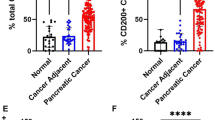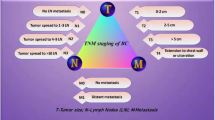Abstract
Chemotherapy remains the first-choice option for adjuvant therapy in breast cancer. Here, we investigated the impact of the first chemotherapic cycle of doxorubicin on the plasmatic–proteomic profiling of women diagnosed with breast cancer (n = 87). Blood samples were obtained from the same patient before and after doxorubicin infusion (1 h, 60 mg/m2) and processed for label-free LC-MS proteomic screening. A total of 80 proteins were downregulated after chemotherapy. In silico analysis revealed that the main biological process enrolled was inflammation and canonical pathways involving acute phase proteins. TNF-α, IL-1β, IL-12, TGF-β1, clusterin, and gelsolin were chosen as relevant for further validation. All selected targets presented reduced plasmatic levels after treatment. Our results indicate that doxorubicin downregulated acute phase proteins immediately after its infusion. Since such proteins are cancer promoting, its downregulation could support the effectiveness of doxorubicin along treatment.




Similar content being viewed by others
References
Cecilio AP, Takakura ET, Jumes JJ, Dos Santos JW, Herrera AC, Victorino VJ, et al. Breast cancer in Brazil: epidemiology and treatment challenges. Breast Cancer. 2015;7:43–9.
Chew E. Adjuvant therapy for breast cancer - who should get what? West J Med. 2001;174(4):284–7.
Prietsman TJ. Results of a prospective clinical trial comparing two cytotoxic regimes containing adriamycin in women with advanced breast cancer. Clin Oncol. 1975;1(3):207–11.
Sparano JA, Makhson AN, Semiglazov VF, Tjulandin SA, Balashova OI, Bondarenko IN, et al. Pegylated liposomal doxorubicin plus docetaxel significantly improves time to progression without additive cardiotoxicity compared with docetaxel Monotherapy in patients with advanced breast cancer previously treated with neoadjuvant-adjuvant anthracycline therapy: results from a randomized phase III study. J Clin Oncol. 2009;20(27):4522–9.
Minotti G, Menna P, Salvatorelli E, Cairo G, Gianni L. Anthracyclines: molecular advances and pharmacologic developments in antitumor activity and cardiotoxicity. Pharmacol Rev. 2004;56(2):185–229.
Kim ES, Cha Y, Ham M, Jung J, Kim SG, Hwang S, et al. Inflammatory lipid sphingosine-1-phosphate upregulates C-reactive protein via C/EBPβ and potentiates breast cancer progression. Oncogene. 2014;33(27):3583–93.
Ham M, Moon A. Inflammatory and microenvironmental factors involved in breast cancer progression. Arch Pharm Res. 2013;36(12):1419–31.
Lakota K, Zigon P, Mrak-Poljsak K, Rozman B, Shoenfeld Y, Sodin-Semrl S. Antibodies against acute phase proteins and their functions in the pathogenesis of disease: a collective profile of 25 different antibodies. Autoimmun Rev. 2011;10(12):779–89.
Pensa S, Watson CJ, Poli V. Stat3 and the inflammation/acute phase response in involution and breast cancer. J Mammary Gland Biol Neoplasia. 2009;14(2):121–9.
Tisdale MJ. Pathogenesis of cancer cachexia. J Support Oncol. 2003;1(3):159–68.
Coventry BJ, Ashdown ML, Quinn MA, Markovic SN, Yatomi-Clarke SL, Robinson AP. CRP identifies homeostatic immune oscillations in cancer patients: a potential treatment targeting tool? J Transl Med. 2009;7:102.
Ansar W, Ghosh S. C-reactive protein and the biology of disease. Immunol Res. 2013;56(1):131–42.
Noguchi Y, Yoshikawa T, Matsumoto A, Svaninger G, Gelin J. Are cytokines possible mediators of cancer cachexia? Surg Today. 1996;26(7):467–75.
Stephens NA, Skipworth RJ, Fearon KC. Cachexia, survival and the acute phase response. Curr Opin Support Palliat Care. 2008;2(4):267–74.
Michlmayr A, Bachleitner-Hofmann T, Baumann S, Marchetti-Deschmann M, Rech-Weichselbraun I, Burghuber C, et al. Modulation of plasma complement by the initial dose of epirubicin/docetaxel therapy in breast cancer and its predictive value. Br J Cancer. 2010;103(8):1201–8.
Panis C, Pizzatti L, Herrera AC, Cecchini R, Abdelhay E. Putative circulating markers of the early and advanced stages of breast cancer identified by high-resolution label-free proteomics. Cancer Lett. 2013;330(1):57–66.
Panis C, Pizzatti L, Herrera AC, Corrêa S, Binato R, Abdelhay E. Label-free proteomic analysis of breast cancer molecular subtypes. J Proteome Res. 2014;13(11):4752–72.
Panis C, Pizzatti L, Corrêa S, Binato R, Lemos GF, Herrera AC, et al. The positive is inside the negative: HER2-negative tumors can express the HER2 intracellular domain and present a HER2-positive phenotype. Cancer Lett. 2015;357(1):186–95.
McShane LM, Altman DG, Sauerbrei W, Taube SE, Gion M, Clark GM. REporting recommendations for tumor MARKer prognostic studies (REMARK). Nat Clin Pract Urol. 2005;2(8):416–22.
Panis C, Pizzatti L, Abdelhay E. How can proteomics reach cancer biomarkers? Curr Proteomics. 2013;10(2):136–49.
Pizzatti L, Panis C, Lemos G, Rocha M, Cecchini R, Souza GH, et al. Label-free MSE proteomic analysis of chronic myeloid leukemia bone marrow plasma: disclosing new insights from therapy resistance. Proteomics. 2012;12(17):2618–31.
Chen ST, Pan TL, Tsai YC, Huang CM. Proteomics reveals protein profile changes in doxorubicin--treated MCF-7 human breast cancer cells. Cancer Lett. 2002;181(1):95–107.
Kumar SN, Konorev EA, Aggarwal D, Kalyanaraman B. Analysis of proteome changes in doxorubicin-treated adult rat cardiomyocyte. J Proteomics. 2011;74(5):683–97.
Lee SH, Kim SY, Kim JH, Jung HY, Moon JH, Bae KH, et al. Phosphoproteomic analysis of electroacupuncture analgesia in an inflammatory pain rat model. Mol Med Rep. 2012;6(1):157–62.
Panis C. Unraveling oxidation-induced modifications in proteins by proteomics. Adv Protein Chem Struct Biol. 2014;94:19–38.
Kono H, Onda A, Yanagida T. Molecular determinants of sterile inflammation. Curr Opin Immunol. 2014;26:147–56.
Mihara M, Hashizume M, Yoshida H, Suzuki M, Shiina M. IL-6/IL-6 receptor system and its role in physiological and pathological conditions. Clin Sci (Lond). 2012;122(4):143–59.
Desborough JP. The stress response to trauma and surgery. Br J Anaesth. 2000;85(1):109–17.
Panis C, Victorino VJ, Herrera AC, Freitas LF, De Rossi T, Campos FC, et al. Differential oxidative status and immune characterization of the early and advanced stages of human breast cancer. Breast Cancer Res Treat. 2012;133(3):881–8.
Argilés JM, Busquets S, Stemmler B, López-Soriano FJ. Cancer cachexia: understanding the molecular basis. Nat Rev Cancer. 2014;14(11):754–62.
Hamaguchi T, Wakabayashi H, Matsumine A, Sudo A, Uchida A. TNF inhibitor suppresses bone metastasis in a breast cancer cell line. Biochem Biophys Res Commun. 2011;407(3):525–30.
Yu M, Zhou X, Niu L, Lin G, Huang J, Zhou W, et al. Targeting transmembrane TNF-α suppresses breast cancer growth. Cancer Res. 2013;73(13):4061–74.
Fruehauf JP, Sinha BK. Selective formation of tumor necrosis factor-alpha (TNF) degradation products contributes to TNF mediated cytotoxicity. Oncol Res. 1992;4(3):91–101.
Suswam EA, Nabors LB, Huang Y, Yang X, King PH. IL-1beta induces stabilization of IL-8 mRNA in malignant breast cancer cells via the 3′ untranslated region: involvement of divergent RNA-binding factors HuR, KSRP and TIAR. Int J Cancer. 2005;113(6):911–9.
Schwartz Y, Avraham R, Benish M, Rosenne E, Ben-Eliyahu S. Prophylactic IL-12 treatment reduces postoperative metastasis: mediation by increased numbers but not cytotoxicity of NK cells. Breast Cancer Res Treat. 2008;107(2):211–23.
Derynck R, Muthusamy BP, Saeteurn KY. Signaling pathway cooperation in TGF-β-induced epithelial-mesenchymal transition. Curr Opin Cell Biol. 2014;31:56–66.
Zarzynska JM. Two faces of TGF-beta1 in breast cancer. Mediat Inflamm. 2014;2014:141747.
Falgarone G, Chiocchia G. Chapter 8: clusterin: a multifacet protein at the crossroad of inflammation and autoimmunity. Adv Cancer Res. 2009;104:139–70.
Djeu JY, Wei S. Clusterin and chemoresistance. Adv Cancer Res. 2009;105:77–92.
Niu ZH, Wang Y, Chun B, Li CX, Wu L. Secretory clusterin (sCLU) overexpression is associated with resistance to preoperative neoadjuvant chemotherapy in primary breast cancer. Eur Rev Med Pharmacol Sci. 2013;17(10):1337–44.
Li GH, Arora PD, Chen Y, McCulloch CA, Liu P. Multifunctional roles of gelsolin in health and diseases. Med Res Rev. 2012;32(5):999–1025.
Van den Abbeele A, De Corte V, Van Impe K, Bruyneel E, Boucherie C, Bracke M, et al. Downregulation of gelsolin family proteins counteracts cancer cell invasion in vitro. Cancer Lett. 2007;255(1):57–70.
Buranrat B, Connor JR. Cytoprotective effects of ferritin on doxorubicin-induced breast cancer cell death. Oncol Rep. 2015. doi:10.3892/or.2015.4250.
Acknowledgments
The authors are grateful to the Conselho Nacional de Desenvolvimento Tecnológico (CNPq), INCT para o Controle do Câncer and Fundação Araucária for providing the financial support of the study.
Author information
Authors and Affiliations
Corresponding author
Ethics declarations
Conflict of interest
None.
Electronic supplementary material
Below is the link to the electronic supplementary material.
Supplementary Table 1
(XLS 40kb)
Supplementary Table 2
(XLS 1841kb)
Supplementary Table 3
(XLS 1981kb)
Supplementary Table 4
(XLS 58kb)
Supplementary Table 5
(XLS 57kb)
Rights and permissions
About this article
Cite this article
Panis, C., Pizzatti, L., Bufalo, A.C. et al. Early downregulation of acute phase proteins after doxorubicin exposition in patients with breast cancer. Tumor Biol. 37, 3775–3783 (2016). https://doi.org/10.1007/s13277-015-4203-7
Received:
Accepted:
Published:
Issue Date:
DOI: https://doi.org/10.1007/s13277-015-4203-7




